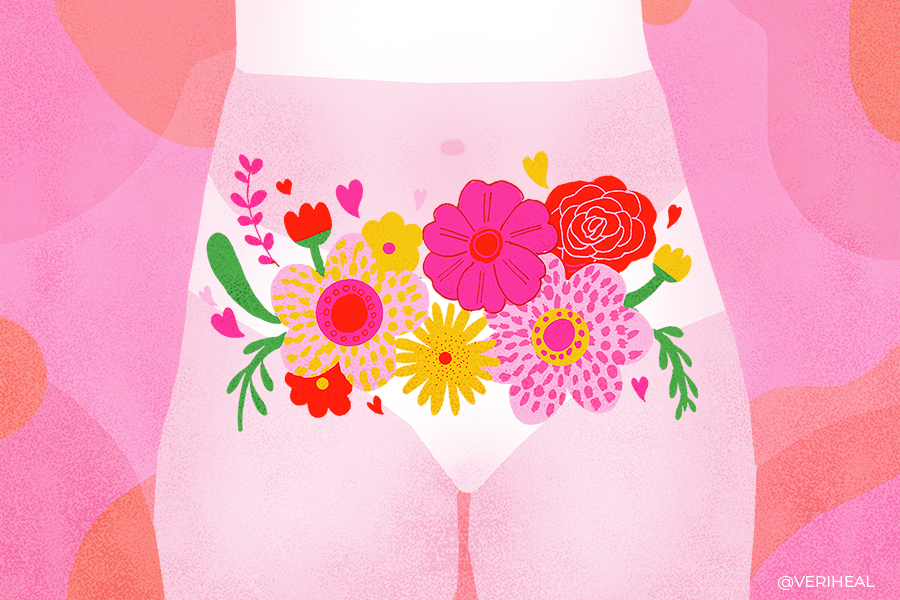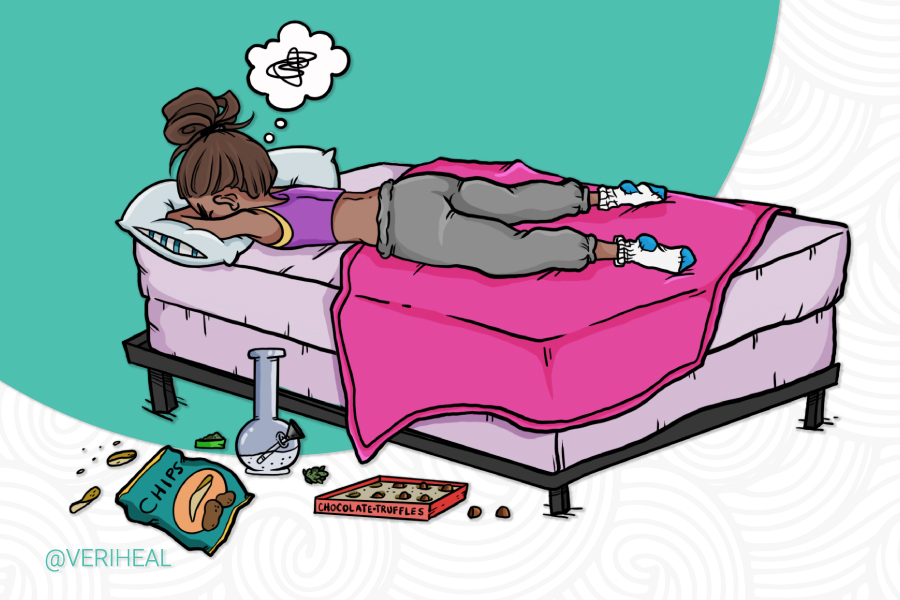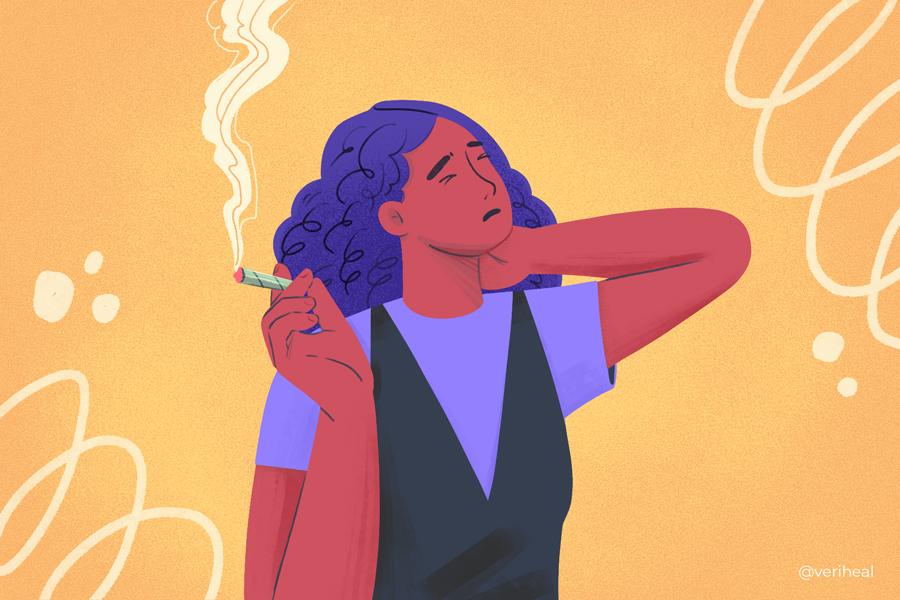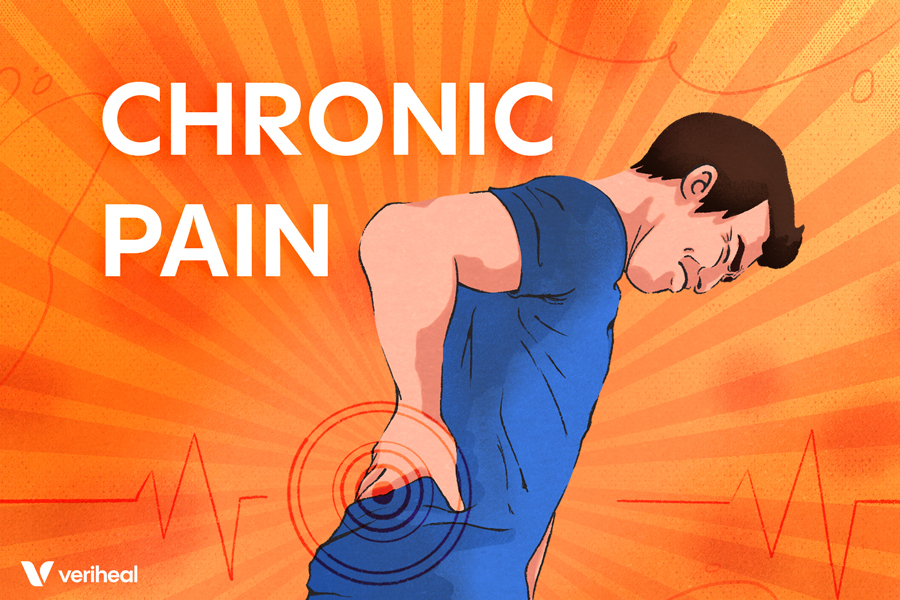Medical Marijuana Can Help Ease Menstrual Pain

Cannabis has been used for symptoms of Premenstrual Syndrome (PMS) for over 4,000 years. PMS has a wide range of symptoms, many of which can be lessened with cannabis usage.
PMS can cause mood swings, fatigue, and pain such as cramps, headaches, and back pain. It can also cause a variety of other symptoms, all of which differ in severity from person to person.
- Can Medical Cannabis Treat Premenstrual Syndrome?
- What is Premenstrual Syndrome?
- Cannabinoids and PMS Research
- Helpful Forms of Cannabis for PMS
- Can Cannabis Help Symptoms of Premenstrual Dysphoric Disorder?
- What is Premenstrual Dysphoric Disorder?
- Speaking to your Doctor about PMS & PMDD
Can Medical Cannabis Treat Premenstrual Syndrome?
Premenstrual Syndrome can cause chronic pain and emotional distress.
Many of these symptoms–including anxiety and pain perception–are regulated in part by the endocannabinoid system. Cannabis can interact with receptors in this system to ease pain and lessen anxiety.
In other words, cannabis may be able to help combat some symptoms of PMS.
What is Premenstrual Syndrome?
Premenstrual syndrome (PMS) occurs in people with uteruses in the days before menstruation begins and a few days after menstruation starts.
Researchers believe that PMS happens because progesterone and estrogen levels drop dramatically during this point in the monthly cycle (18).
Symptoms of PMS include:
- Painful periods
- Irritability
- Angry outbursts or mood swings (18)
- Depression
- Anxiety
- Crying Spells
- Social withdrawal
- Insomnia
- Fatigue (18)
- Taking more naps than usual
- Confusion
- Changes in sexual desire
- Appetite changes or food cravings (18)
- Constipation
- Diarrhea
- Feeling bloated or gassy
- Cramping
- Headaches
- Back Pain
- Swollen or tender breasts
- Swelling of the hands or feet (17)
- Weight gain (17)
- Abdominal pain (17)
- Gastrointestinal problems (17)
- Skin problems such as acne (17)
Symptoms usually lessen 3-7 days after menstruation starts when hormone levels return to base levels.
The severity of symptoms varies from person to person (17). Severe PMS symptoms may limit a person’s ability to perform everyday activities like going to work or school.
PMS symptoms may change or go away after life changes like pregnancy and menopause.
Existing Conditions Affected by PMS
PMS can make the following conditions worse right before menstruation (16):
- Depression
- Anxiety
- Seizures
- Migraines
- Asthma
- Allergies
- Myalgic encephalomyelitis (ME) or Chronic Fatigue Syndrome (CFS) (17)
- Irritable bowel syndrome (IBS) (17)
- Bladder pain syndrome (17)
Cannabinoids & PMS Research
Historians have noted that cannabis has been used for period pain (dysmenorrhea) in Chinese, Indian, and Egyptian cultures up to 4,000 years before the common era (B.C.E). Additionally, documented medical cannabis use for women’s health purposes is dated back to publications from the 1890s, when Queen Victoria was prescribed cannabis for menstrual pain (14).
Cannabis contains over 120 naturally occurring compounds called cannabinoids. The most well-known cannabinoids include Δ9-tetrahydrocannabinol (THC) and cannabidiol (CBD).
Cannabis begins its work in the body through the activation of CB1 and CB2 receptors, among various others. These receptors are found in the central nervous system and the tissues of various organs in the body.
CB1 and CB2 receptors modulate fat-based neurotransmitters called endocannabinoids. The endocannabinoids are part of the larger endocannabinoid system (ECS).
The ECS plays a key role in regulating certain bodily processes, such as inflammation, pain perception, and a variety of others. These cannabinoid receptors modulate fat-based neurotransmitters called endocannabinoids.
Certain cannabinoids like CBD can also influence our ECS enzymes and boost overall endocannabinoid levels.
As a result, the boosted endocannabinoid levels impact the perception of pain. They can also help to relieve other symptoms such as insomnia, irritability, depression, and anxiety.
Much research has been done about cannabis for common symptoms of PMS–including cramps, chronic pain, insomnia, and anxiety, among others. In particular, CBD has been shown to help relieve chronic pain and help lessen anxiety and depression.
Many researchers believe that cannabis is a valuable alternative to hormonal medications for PMS and PMDD as well as other women’s health issues including endometriosis, vaginismus, and vulvodynia (17).
Nevertheless, little research exists about the effects of cannabis on this specific syndrome (17). Rather, the use of cannabis for menstrual cramps and pain is based on anecdotal evidence. As such, more specific clinical research needs to be done to gain a better understanding of medical cannabis dosage recommendations for PMS.
Cannabis For Period Pain
Because medical marijuana can relieve both acute and chronic pain, many patients are opting to use medical cannabis for menstrual pain.
A study published in 2022 noted that the endocannabinoid system has a role in regulating uterine contractions during menstruation. Cannabinoid agonists–such as THC and CBD–are able to trigger the relaxation of the uterus. As a result, these cannabinoids may help to ease menstrual cramps (or dysmenorrhoea) (12).
In other words, cannabis can help ease period cramps.
Cannabis has long been known for its pain-relieving and anti-inflammatory properties but is rarely studied in the context of PMS. Though the results of this study are positive, more research must be done in order to link period pain relief with cannabis usage.
Helpful Forms of Cannabis for PMS
PMS can cause several different symptoms, which vary in severity from person to person.
As such, cannabis products such as flower, tinctures, edibles, and topicals can all be used to help relieve PMS symptoms.
For those looking for relief without psychoactive effects, CBD products—such as CBD oil and other creams and balms—may be helpful in relieving back pain and uterine cramps. Particularly when these CBD products contain small amounts of other cannabinoids–including minuscule amounts of THC–the cannabinoids in the balm work together through the entourage effect to provide stronger, more well-balanced effects.
Additionally, many dispensaries offer vaginal suppositories containing THC and CBD as well as personal lubricant products.
However, because research on cannabis for PMS is in its early stages, dosage recommendations are generally unavailable.
Can Cannabis Help Symptoms of Premenstrual Dysphoric Disorder?
Premenstrual dysphoric disorder (PMDD) is an overlapping but more severe form of PMS.
The symptoms of Premenstrual Dysphoric Disorder (PMDD) are similar to those of PMS. However, they’re often more severe and can cause significant distress and functional impairment.
Decades of research have shown the effectiveness of cannabis against chronic and acute pain, as well as anxiety and depression. Though these effects have not been significantly studied in relation to PMDD, cannabis may be used to lessen specific symptoms of this disorder, particularly when combined with other treatment methods.
What is Premenstrual Dysphoric Disorder?
If you are experiencing severe mood changes and physical symptoms as part of your PMS, it is possible that you may be experiencing PMDD.
PMDD is experienced during the childbearing years by 5% to 8% of people born female, though this statistic is likely underreported. Many of these people experience moderate-to-severe symptoms that cause significant distress and functional impairment, often prompting them to seek treatment (10). They may also experience regular anxiety or depression (18).
Symptoms of PMDD can include (18):
- Lasting anger or irritability
- Feelings of sadness or despair
- Thoughts of suicide
- Feelings of tension, irritability, or anxiety
- Mood swings or crying often
- Panic attacks
- Feeling out of control
- Tiredness and low energy
- Binge eating or food cravings
- Difficulty sleeping
- Physical symptoms like those of PMS
- Lack of interest in daily activities or relationships
PMDD is a separate diagnosis from PMS, as listed in the Diagnostic and Statistical Manual of Mental Disorders, 5th Edition (DSM-5). PMDD has specific criteria, including a minimum number of symptoms with at least one marked mood symptom. The symptoms also need to be directly related to the menstrual cycle and severe enough to interfere with social, occupational, sexual, or academic functions (10).
Unfortunately, people with PMDD will experience more difficulties in quality of life and losses in work productivity, while also incurring greater healthcare costs. There are some proven risk factors for developing PMS or PMDD including past traumatic events, cigarette smoking, and obesity. Genetics is a possible but speculative risk factor (10).
PMDD can potentially be a serious mental health condition and have a profound effect on mood, life, and work. Those with PMDD should report any worsening mood symptoms including suicidal thoughts to their healthcare providers right away.
Using Cannabis for PMDD
Like PMS, little research exists that explores the use of cannabis for PMDD specifically.
However, cannabis has historically been used to lessen common symptoms like insomnia, mood swings, tension, irritability, and anxiety.
With the severity of mood symptoms associated with PMDD, cannabis should best be used with caution and/or in conjunction with other forms of treatment. Always talk to your doctor before implementing cannabis into your treatment routine.
Speaking to your Doctor about PMS & PMDD
If you suspect you’re experiencing PMS or PMDD, log physical and mood changes for a few months before speaking to your provider.
To best understand the pattern and severity, note the symptoms you experience along with the days and a subjective rating of each symptom. This log will help your doctor determine if you are experiencing PMS or PMDD. To be diagnosed with PMS, symptoms must meet the following criteria (17):
- Symptoms must be present in the 5 days before a period for at least 3 menstrual cycles in a row
- Symptoms must end within 4 days of when bleeding begins
- Symptoms must interfere with some normal activities during this time.
When symptoms are severe, be sure to reach out to your medical provider. They may recommend over-the-counter painkillers such as ibuprofen, Advil, or Tylenol for cramping. They may also prescribe diuretics to help reduce fluid retention during this time (17). Birth control methods that prevent ovulation or antidepressants may help improve irritability, anxiety, or depression but can also amplify these symptoms.
If you plan on taking herbal supplements such as black cohosh, chaste berry, or evening primrose oil, speak to your doctor first as these supplements may have unpleasant side effects with other medical conditions you may have, such as heart problems or alongside other medications (17).
As cannabis can affect all patients differently, make sure to consult with your medical provider before beginning use for PMS or PMDD symptoms.
Note: Veriheal does not intend to give this as professional medical advice. Do not attempt to self-diagnose or prescribe treatment based on the information provided on this page. Always consult a physician before making any decisions on the treatment of a medical condition.
1. Chadi, N., & Levy, S. (2019). What every pediatric gynecologist should know about marijuana use in adolescents. Journal of Pediatric and Adolescent Gynecology, 32(4), 349–353. https://www.sciencedirect.com/science/article/abs/pii/S1083318819301676
2. Corsi, D. J., Murphy, M. S. Q., & Cook, J. (2021). The effects of cannabis on female reproductive health across the life course. Cannabis and Cannabinoid Research, 6(4), 275–287. https://www.liebertpub.com/doi/full/10.1089/can.2020.0065
3. Gudipally, P. R., & Sharma, G. K. (2022, July 18). Premenstrual syndrome – statpearls – NCBI bookshelf. National Library of Medicine. Retrieved February 13, 2023, from https://www.ncbi.nlm.nih.gov/books/NBK560698/
4. Han, L., Alton, K., Colwill, A. C., Jensen, J. T., McCrimmon, S., & Darney, B. G. (2021). Willingness to use cannabis for gynecological conditions: A national survey. Journal of Women’s Health, 30(3), 438–444. https://www.liebertpub.com/doi/full/10.1089/jwh.2020.8491
5. Hill, M. N., Karacabeyli, E. S., & Gorzalka, B. B. (2007). Estrogen recruits the endocannabinoid system to modulate emotionality. Psychoneuroendocrinology, 32(4), 350–357. https://www.sciencedirect.com/science/article/abs/pii/S0306453007000303?via%3Dihub
6. Joyce, K. M., Thompson, K., Good, K. P., Tibbo, P. G., O’Leary, M. E., Perrot, T. S., Hudson, A., & Stewart, S. H. (2021). The impact of depressed mood and coping motives on cannabis use quantity across the menstrual cycle in those with and without pre‐menstrual dysphoric disorder. Addiction, 116(10), 2746–2758. https://onlinelibrary.wiley.com/doi/abs/10.1111/add.15465
7. Joyce, K.M., Good, K.P., Tibbo, P. et al. Addictive behaviors across the menstrual cycle: a systematic review. Arch Womens Ment Health 24, 529–542 (2021). https://link.springer.com/article/10.1007/s00737-020-01094-0
8. Lammert, S., Harrison, K., Tosun, N., & Allen, S. (2018). Menstrual Cycle in Women Who Co-use Marijuana and Tobacco. Journal of addiction medicine, 12(3), 207–211. https://www.ncbi.nlm.nih.gov/pmc/articles/PMC5970012
9. Lynn, B., Miller, C., Thompson, J., & Campian, E. C. (2017). The relationship between marijuana use prior to sex and sexual function in women. The Journal of Sexual Medicine, 14(1). https://academic.oup.com/jsm/article/14/Supplement_1/S105/7010986
10. Mishra, S., Elliott, H., & Marwaha, R. (2022). Premenstrual Dysphoric Disorder. In StatPearls. StatPearls Publishing. https://www.ncbi.nlm.nih.gov/books/NBK532307/
11. Nickel J. C. (2018). Medical marijuana for urologic chronic pelvic pain. Canadian Urological Association journal = Journal de l’Association des urologues du Canada, 12(6 Suppl 3), S181–S183. https://www.ncbi.nlm.nih.gov/pmc/articles/PMC6040614/
12. Pagano E., Orlando P., Finizio S., Rossi A., Buono L., Iannotti F.A., Piscitelli F., Izzo A.A., di Marzo V., Borrelli F. Role of the Endocannabinoid System in the Control of Mouse Myometrium Contractility during the Menstrual Cycle. Biochem. Pharmacol. 2017;124:83–93. doi: 10.1016/j.bcp.2016.11.023.
13. Russo, E. (2002). Cannabis treatments in obstetrics and gynecology: A historical review. Journal of Cannabis Therapeutics, 2(3-4), 5–35. https://www.tandfonline.com/doi/abs/10.1300/J175v02n03_02
14. Russo, E. B., Cuttler, C., Cooper, Z. D., Stueber, A., Whiteley, V. L., & Sexton, M. (2022). Survey of patients employing cannabigerol-predominant cannabis preparations: Perceived medical effects, adverse events, and withdrawal symptoms. Cannabis and Cannabinoid Research, 7(5), 706–716. https://www.liebertpub.com/doi/full/10.1089/can.2021.0058
15. Sinclair, J., Armour, S., Akowuah, J. A., Proudfoot, A., & Armour, M. (2022). “Should I inhale?”—perceptions, barriers, and drivers for medicinal cannabis use amongst Australian women with primary dysmenorrhoea: A qualitative study. International Journal of Environmental Research and Public Health, 19(3), 1536. https://www.mdpi.com/1660-4601/19/3/1536
16. Slavin, M., Barach, E., Farmer, S., Luba, R., & Earleywine, M. (2017). Cannabis and symptoms of PMS and PMDD. Addiction Research & Theory, 25(5), 383–389. https://www.tandfonline.com/doi/full/10.1080/16066359.2017.1294165
17. The American Academy of Obstetricians and Gynecologists. (2021, May). Premenstrual syndrome (PMS). ACOG. Retrieved February 13, 2023, from https://www.acog.org/womens-health/faqs/premenstrual-syndrome
18. US Department of Health & Human Services. (2021, February 22). Premenstrual syndrome (PMS). Office on Women’s Health. Retrieved February 13, 2023, from https://www.womenshealth.gov/menstrual-cycle/premenstrual-syndrome
19. US Department of Health & Human Services. (2021, February 22). Premenstrual dysphoric disorder (PMDD). Office on Women’s Health. Retrieved February 13, 2023, from https://www.womenshealth.gov/menstrual-cycle/premenstrual-syndrome/premenstrual-dysphoric-disorder-pmdd








